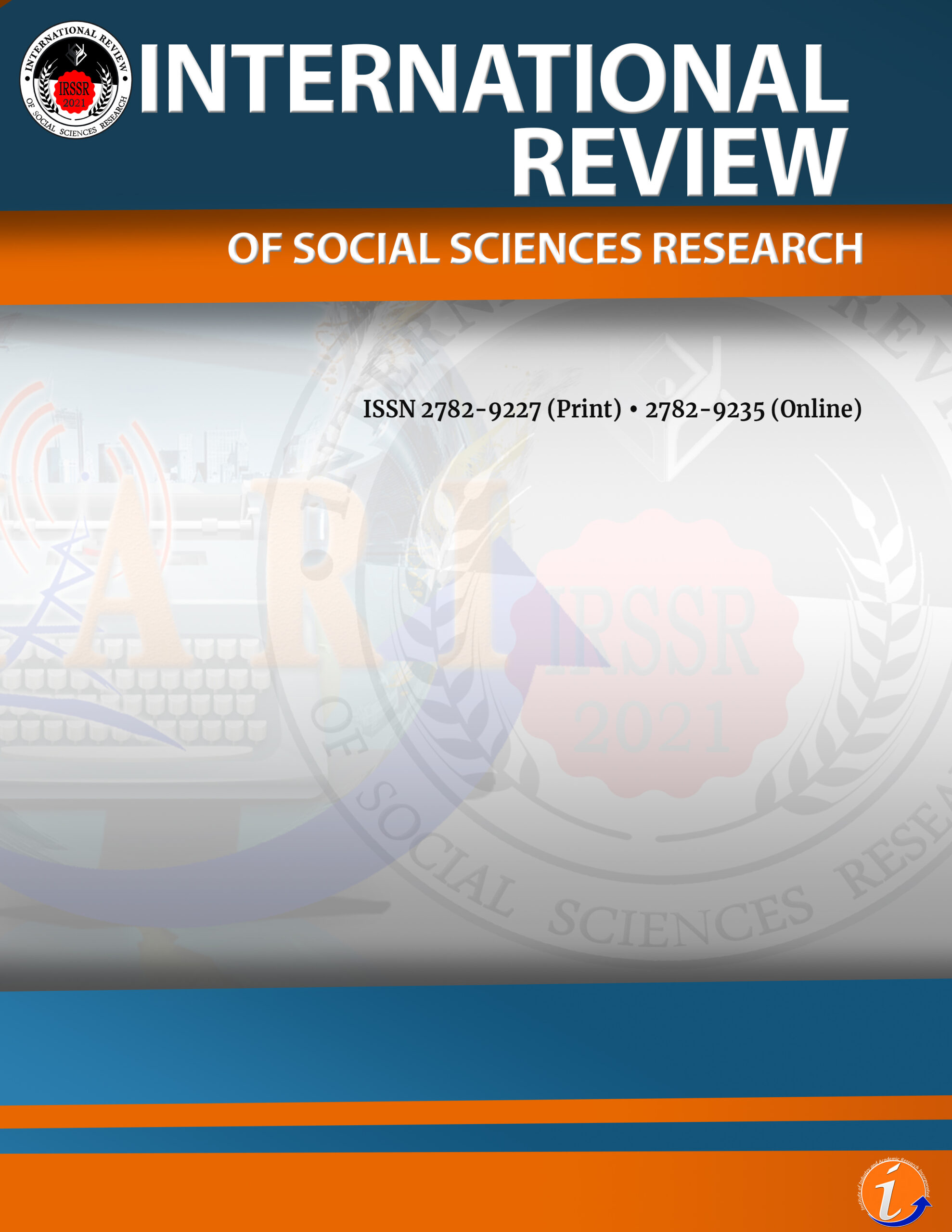As the teenage suicide was increasingly happening during the peak of the COVID-19 pandemic, this study was conducted purposely to determine the profile of victims of suicide as to age, sex, and educational background and identify the causes of teen suicide in one province in Cordillera. The qualitative design and snowball sampling method were used with the study. There were eight key informants composed of Philippine National Police (PNP) officers, teachers, and DSWD personnel. The study revealed that teens who committed suicide were between 1-21 years old and 22-41 years old. The majority of the suicide victims are males, senior high school, and college students. The causes of teenage suicide are the unseen image of suicide, depression, stress, personal problems, and promises not fulfilled due to poverty and hanging. This study finds that teen suicide can be prevented by giving importance to and acting upon family members' unseen images of suicide. In the light of the findings, this study proposes an intervention program dubbed as “Psychosocial Intervention Program for Teen Suicide.” In the prevention of such acts, the family, along with government authorities such as the PNP and the DSWD, work hand in hand in helping individuals who are at the brink of their mental states to consider designing a psychosocial intervention geared toward this goal to incorporate activities that promotes prosocial behaviors and rekindling essential information on the unseen image of suicide.
teenage, suicide, province, Cordillera
Charesma Grace Lud-Ayen. Corresponding author. Ph.D. in Criminology and Ph.D. in Developmental Education. Dean, University of Baguio, Philippines.
Marcel B. Atianzar. Ph.D. Crim student at the University of Baguio and a teacher at Isabela State University, Main Campus, Philippines.
Evarista B. Gano. Ph.D. Crim student at the University of Baguio and a teacher at Ifugao State University –Lamut Campus, Philippines.
This paper is presented in the 3rd International Conference on Multidisciplinary Industry and Academic Research.
Arria AM, O’Grady KE, Caldeira KM, Vincent KB, Wilcox HC, Wish ED. (2009). Suicide ideation among college students: a multivariate analysis. Arch Suicide Res. 2009;13(3):230-46. doi: 10.1080/13811110903044351.
Balcombe, L., & De Leo, D. (2022). The Potential Impact of Adjunct Digital Tools and Technology to Help Distressed and Suicidal Men: An Integrative Review. Frontiers in psychology, 12, 796371. https://doi.org/10.3389/fpsyg.2021.796371
Biddle, L., Donovan, J., Owen-Smith, A., Potokar, J., Longson, D., Hawton, K., & Gunnell, D. (2010). Factors influencing the decision to use hanging as a method of suicide: Qualitative Study. British Journal of Psychiatry, 197(4), 320-325. doi:10.1192/bjp.bp.109.076349
Bilsen J. (2018). Suicide and Youth: Risk Factors. Frontiers in psychiatry, 9, 540. https://doi.org/10.3389/fpsyt.2018.00540
Chekstere, O., Kondratenko, L., & Manylova, L. (2017). New Aspects of the Teen Suicide. The Educational Review, 1(4), 91-93. http://dx.doi.org/10.26855/er.2017.04.002
Comer J.S., & Barlow, D.H. (2014). The occasional case against broad dissemination and implementation: retaining a role for specialty care in the delivery of psychological treatments. Am Psychol. 2014 Jan;69(1):1-18. doi: 10.1037/a0033582.
Cooper, G. D., Clements, P. T., & Holt, K. (2011). A review and application of suicide prevention programs in high school settings. Issues in mental health nursing, 32(11), 696-702.
Cuesta, I., Montesó‐Curto, P., Metzler Sawin, E., Jiménez‐Herrera, M., Puig‐Llobet, M., Seabra, P., & Toussaint, L. (2021). Risk factors for teen suicide and bullying: An international integrative review. International journal of nursing practice, 27(3), e12930.
Galligan, S. B., Barnett, R. V., Brennan, M. A., & Israel, G. D. (2010). Understanding the link between gender role conflict, resilience, and propensity for suicide in adolescent and emerging adult males. International journal of men’s health, 9(3), 201.
Ganaprakasam, C (2018). Emotional intelligence on suicidal ideation and mental health. Muslim Journal of Social Sciences and Humanities, 2(3), 185-195.
Gripshi, Z. (2022). Social Factors and Warning Signs of Suicide in Adolescents. European Journal of Social Science Education and Research, 9(1), 92–102. https://doi.org/10.26417/442avx77
Gutierrez, P. M., Osman, A., Kopper, B. A., Barrios, F. X., & Bagge, C. L. (2000). Suicide risk assessment in a college student population. Journal of Counseling Psychology.
Hallfors, D., Brodish, P. H., Khatapoush, S., Sanchez, V., Cho, H., & Steckler, A. (2006). Feasibility of screening adolescents for suicide risk in “real-world” high school settings. American Journal of Public Health, 96(2), 282-287.
Hink, A.B., Killings, X., Bhatt, A., Ridings., & Andrews, A. (2022). Adolescent Suicide—Understanding Unique Risks and Opportunities for Trauma Centers to Recognize, Intervene, and Prevent a Leading Cause of Death. Curr Trauma Rep 8, 41–53. https://doi.org/10.1007/s40719-022-00223-7
Ilic, M., & Ilic, I. (2022). Trends in suicide by hanging, strangulation, and suffocation in Serbia, 1991-2020: A joinpoint regression and age-period-cohort analysis. World journal of psychiatry, 12(3), 505–520. https://doi.org/10.5498/wjp.v12.i3.505
Jayervand, H. (2013). Prediction of suicidal ideation based on psychological well-being and religious spiritual determinants among the individuals with attempted suicide. Journal of Basic and Applied Scientific Research, 3(8), 587-590
Joiner, T.E. (2005). Why people die by suicide. Cambridge, MA: Harvard Univ. Press.
Jung, S., Lee, D., Park, S., Lee, K., Kweon, Y.S., Lee, E.J., Yoon, K.H., Cho, H., Jung, H., Kim, A.R., Shin, B.R. & Hong, H.J. (2019). Gender differences in Korean adolescents who died by suicide based on teacher reports. Child Adolesc Psychiatry Ment Health 13, 12 (2019). https://doi.org/10.1186/s13034-019-0274-3
Khadse, P. A., Ghosh, S., Murthy, P., & Girimaji, S. C. (2022). Student Suicides in the Context of Online Education During COVID-19 Pandemic in India: Analysis of Media Reports. Indian Journal of Psychological Medicine, 44(1), 91–94. https://doi.org/10.1177/02537176211061224
Kroning, M., & Kroning, K. (2016). Teen depression and suicide: A silent crisis. Journal of Christian nursing, 33(2), 78-86.
Lim, M., Lee, S.U. & Park, J.I. (2014). Difference in suicide methods used between suicide attempters and suicide completers. Int J Ment Health Syst 8, 54 (2014). https://doi.org/10.1186/1752-4458-8-54
Mamun, M. A., Chandrima, R. M., & Griffiths, M. D. (2020). Mother and Son Suicide Pact Due to COVID-19-Related Online Learning Issues in Bangladesh: An Unusual Case Report. International journal of mental health and addiction, 1–4. https://doi.org/10.1007/s11469-020-00362-5
Manzar, M. D., Albougami, A., Usman, N., & Mamun, M. A. (2021). Suicide among adolescents and youths during the COVID‐19 pandemic lockdowns: A press media reports‐based exploratory study. Journal of child and adolescent psychiatric nursing, 34(2), 139-146.
McKenzie, S. K., Collings, S., Jenkin, G., & River, J. (2018). Masculinity, Social Connectedness, and Mental Health: Men’s Diverse Patterns of Practice. American journal of men’s health, 12(5), 1247–1261. https://doi.org/10.1177/1557988318772732
Natalia, V., & Julie, D. (2021). Measures of psychological support for minors prone to suicide in pandemic conditions in the United States. Психология и педагогика служебной деятельности, (2), 163-168.
Nurtanti, S., Handayani, S., Ratnasari, N., Husna,P. & Susanto,T.(2020). Characteristics, causality, and suicidal behavior: a qualitative study of family members with suicide history in Wonogiri, Indonesia. Frontiers of Nursing,7(2) 169-178. https://doi.org/10.2478/fon-2020-0016
Nugent, A.C., Ballard, E.D., Park, L.T., & Zarate, C.A., (2019). Research on the pathophysiology, treatment, and prevention of suicide: practical and ethical issues. BMC Psychiatry 19, 332. https://doi.org/10.1186/s12888-019-2301-6
O’Connor, M. J., Portnoff, L. C., Lebsack‐Coleman, M., & Dipple, K. M. (2019). Suicide risk in adolescents with fetal alcohol spectrum disorders. Birth defects research, 111(12), 822-828.
O’Connor, R., Nock, M. (2014). The psychology of suicidal behaviour, The Lancet Psychiatry, Volume 1, Issue 1, https://doi.org/10.1016/S2215-0366(14)70222-6.
Pederson C. (2018) The importance of Screening for Suicide Risk in Chronic Invisible Illness. J Health Sci Educ. Vol 2(4): 1-5.
Philip, B.V. (2021). Escalating Suicide Rates Among School Children During COVID-19 Pandemic and Lockdown Period: An Alarming Psychosocial Issue. Indian Journal of Psychological Medicine. 43(1):93-94. doi:10.1177/0253717620982514
Randall, J., Doku, D., Wilson, M., and Peltzer, K. (2014). Suicidal Behaviour and Related Risk Factors among School-Aged Youth. PLoS One. 2014; 9(2): e88233. doi: 10.1371/journal.pone.0088233
Sadek, A., Anam, A., Rashid, M., Akber, E., & Khan, N. (2019). Suicide kills more people than any form of violence. Mediascape, 6(2), 87–92. https://doi.org/10.3329/mediscope.v6i2.43158
Sharma, P. (2022). Impact of Education on Suicides in India. Journal of Education Culture and Society, 13(1), 419–428. https://doi.org/10.15503/jecs2022.1.419.428
Shilubane, H. N., Bos, A. E., Ruiter, R. A., van den Borne, B., & Reddy, P. S. (2015). High school suicide in South Africa: teachers’ knowledge, views and training needs. BMC public health, 15(1), 1-8.
Singh, S., Thompson, C. J., Kak, R., Smith, L. N., & Quainoo, N. (2021). Impact of Body Weight Perceptions and Electronic Bullying on Suicide‐Related Risk Behaviors among Youth: Results from Youth Risk Behavior Surveillance System, 2015. Journal of school health, 91(1), 29-36.
Swan, A. (2022). Teen Suicide Prevention Strategies: Why the Current Model is Failing and a New Approach is Necessary. Liberty University Journal of Statesmanship & Public Policy: Vol. 2, Iss. 2
The Myths and Facts of Suicide (2021). Nevada Office of Suicide Prevention. https://suicideprevention.nv.gov/Youth/Myths/
Tsirigotis, K., Gruszczynski, W., & Tsirigotis, M. (2011). Gender differentiation in methods of suicide attempts. Medical science monitor: international medical journal of experimental and clinical research, 17(8), PH65–PH70. https://doi.org/10.12659/msm.881887
Windarwati, H. D., Lestari, R., Supianto, A. A., Wicaksono, S. A., Ati, N. A., Kusumawati, M. W., & Ekawati, D. (2022). A narrative review into the impact of COVID‐19 pandemic on senior high school adolescent mental health. Journal of Child and Adolescent Psychiatric Nursing.
World Health Organization (2021). Suicide. https://www.who.int/news-room/fact-sheets/detail/suicide?fbclid=IwAR00zX5n77nMmKHyNBFJXFIgN8WQRZOM-8D8VXA8i_Y5cIufv6zH1KUVYnM#:~:text=Every%20year%20703%20000%20people,on%20the%20people%20left%20behind
Cite this article:
Lud-Ayen, C., Atianzar, M.B. & Gano, E.B. (2022). Teen suicide in one province in Cordillera. International Review of Social Sciences Research, 2(4), 40 - 61. https://doi.org/10.53378/352951
License:
![]()
This work is licensed under a Creative Commons Attribution (CC BY 4.0) International License.










